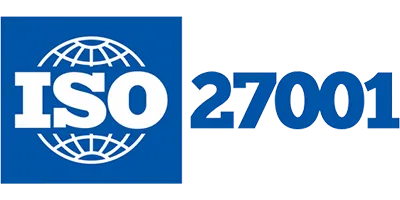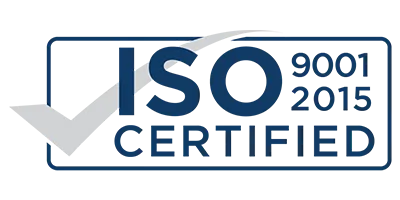In today’s fast-paced world, public sector organizations face numerous challenges in delivering efficient and effective services to citizens. However, with the right tools and strategies in place, these challenges can be transformed into opportunities for growth and innovation.
This is where Salesforce CRM a leading platform, and its trusted consulting partners come into play. In this blog, we will explore how Salesforce, as a trusted consulting partner, empowers public sector organizations to streamline their operations, enhance citizen engagement, and maximize efficiency.
So, let’s dive in and discover the transformative power of Salesforce in the public sector space.
Public sector organizations can overcome a number of challenges with the help of Salesforce. Here are a few examples:
Increased efficiency
Salesforce can help public sector organizations streamline their operations and reduce costs. For example, Salesforce can automate tasks such as data entry and reporting, which enable employees to focus on more strategic work.
Improved communication
Salesforce can help public sector organizations improve communication with their constituents. For example, Salesforce creates a customer relationship management (CRM) system that tracks interactions with constituents, such as emails, phone calls, and service requests. This information can be used to improve customer service and make sure that constituents are getting the services they need.
Enhanced transparency
Salesforce can help public sector organizations improve transparency by making data more accessible to the public. For example, Salesforce can be used to create a public portal where constituents can view information such as budgets, contracts, and performance metrics. This can help build trust between the government and its constituents.
Increased collaboration
Salesforce can help public sector organizations collaborate more effectively with each other. For example, Salesforce can be used to create a shared data repository where different agencies can share information. This can help agencies work together more effectively to solve problems and deliver services to the public.
Improved Operational Efficiency
Salesforce streamlines complex workflows and automates repetitive tasks, saving valuable time and resources for public sector organizations. Research by Survey Company reveals that Salesforce implementation in the public sector can lead to a reduction in manual processes, resulting in increased efficiency and cost savings.
Enhanced Citizen Engagement
Salesforce empowers public sector organizations to deliver personalized, citizen-centric services. With a 360-degree view of citizens, agencies can provide tailored experiences and timely support.
According to one of the studies, Salesforce solutions in the public sector resulted in an increase in citizen engagement and satisfaction.
Key Features of CRM for Public Sector Organizations
Customer relationship management (CRM) is a critical tool for any organization that interacts with customers. For public sector organizations, CRM can be even more important, as it can help them to improve efficiency, communication, and transparency.
There are a number of key features that CRM can offer public sector organizations. These include:
Contact management
CRM can help public sector organizations track and manage their interactions with citizens, constituents, and other stakeholders. This can help them to improve customer service and ensure that everyone is getting the information and services they need.
Case management
CRM can help public sector organizations track and manage cases, such as service requests, complaints, and investigations. This can help them to improve the efficiency of their case management processes and ensure that cases are resolved in a timely and effective manner.
Reporting and analytics
CRM can provide public sector organizations with valuable insights into their interactions with citizens, constituents, and other stakeholders. This information can be used to improve customer service, identify areas for improvement, and make better decisions.
Collaboration
CRM can help public sector organizations to collaborate more effectively with each other. This can be done by sharing information, documents, and tasks. Collaboration can help organizations work together more efficiently and effectively to solve problems and deliver services to the public.
Data-Driven Decision Making
Salesforce equips public sector entities with robust analytics capabilities, allowing them to make data-driven decisions and gain valuable insights into citizen needs and preferences. A case study conducted by Gartner highlighted that organizations using Salesforce saw a substantial increase in the ability to use data effectively to drive decision-making.
Common Challenges When Implementing Salesforce CRM in the Public Sector
Implementing Salesforce CRM in the public sector comes with its own set of challenges. While Salesforce offers a robust platform, addressing the unique needs of government agencies requires careful planning and consideration. Here are some common challenges that organizations may face when implementing Salesforce CRM in the public sector:
Data Privacy and Security
Government agencies deal with sensitive citizen information, and ensuring data privacy and security is paramount. Implementing strong security measures and adhering to compliance regulations can be complex and time-consuming.
Legacy System Integration
Public sector organizations often have existing legacy systems that need to be integrated with Salesforce CRM. Migrating data, ensuring compatibility and seamless integration with legacy systems can pose challenges during the implementation process.
Stakeholder Resistance and Change Management
Resistance to change and lack of buy-in from stakeholders can hinder the successful implementation of Salesforce CRM. It is essential to address concerns, provide adequate training, and communicate the benefits of the new system to overcome resistance.
Customization and Configuration
Public sector agencies have unique processes and workflows that require customization and configuration within Salesforce CRM. Balancing the need for customization with standardization can be a challenge to ensure a scalable and sustainable solution.
Data Quality and Governance
Maintaining data integrity and quality is crucial for effective decision-making. Public sector organizations must establish data governance practices and guidelines to ensure accurate, reliable, and up-to-date data within the CRM system.
User Adoption and Training
Training staff members on how to effectively use Salesforce CRM and encouraging user adoption can be challenging. Providing comprehensive training, ongoing support, and demonstrating the value of the CRM system is essential for successful user adoption.
Budget and Resource Constraints
Public sector organizations often face budget limitations and resource constraints. Allocating sufficient funds and resources for the implementation, customization, and ongoing maintenance of Salesforce CRM can be a challenge.
Compliance with Regulatory Requirements
Public sector agencies must comply with various regulatory requirements, such as data privacy laws, public records management, and accessibility standards. Ensuring Salesforce CRM aligns with these regulations can be a complex task.
Conclusion
Salesforce plays a crucial role in empowering public sector organizations to streamline their operations, enhance citizen engagement, and drive efficient service delivery. As highlighted throughout this blog, the significance of Salesforce in the public sector cannot be overstated. Its robust features, scalability, and customization options make it an ideal solution for addressing the unique challenges faced by government agencies.
As a Salesforce consulting partner, we are committed to supporting public sector organizations on their digital transformation journey. Contact us today to explore how we can assist your organization in leveraging Salesforce to achieve your mission and better serve the public.







